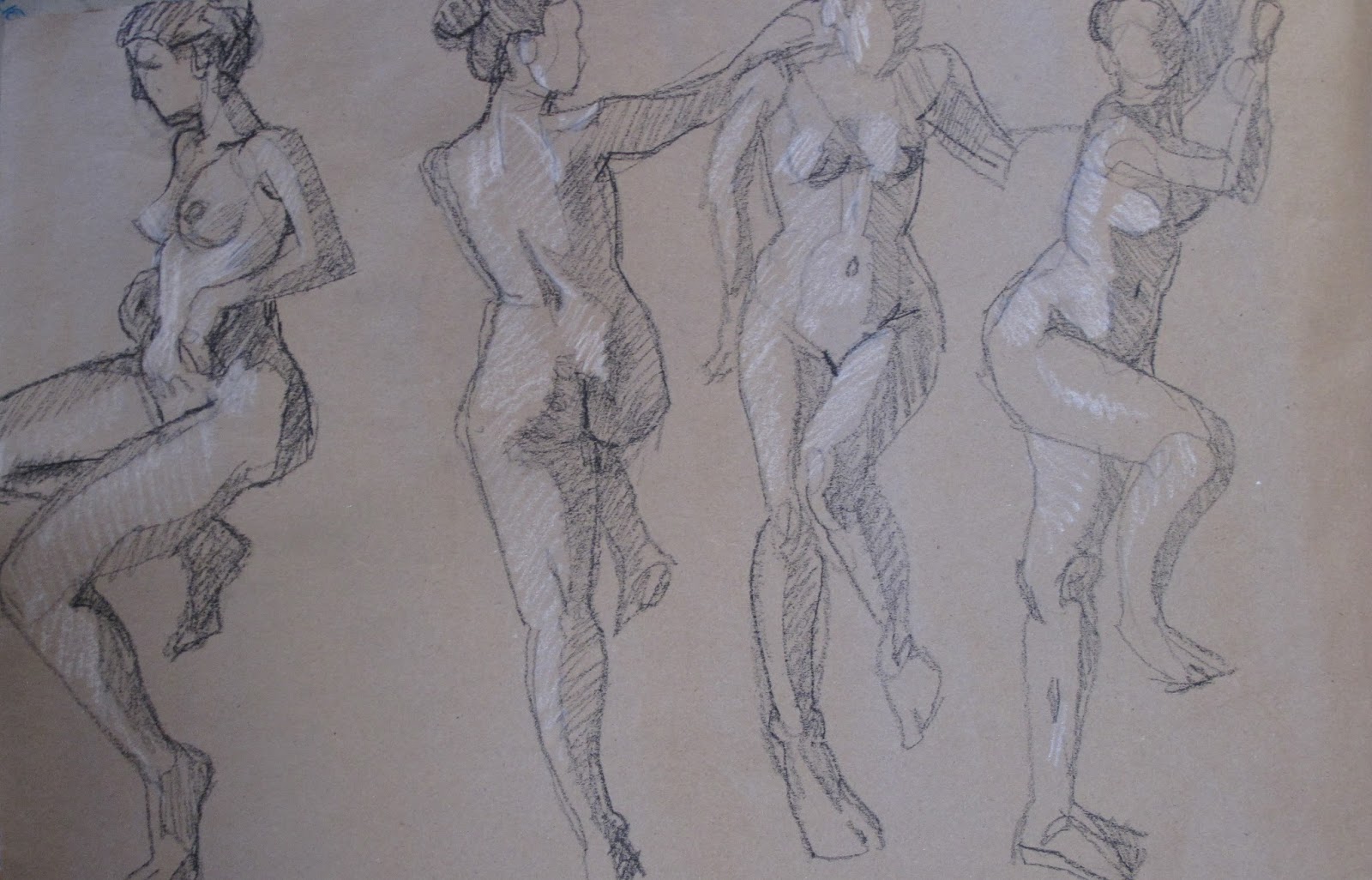The Return Home: Part One
While I am aware that it has been multiple weeks since I returned from my time back on the East Coast, the sheer amount of time I have been standing in restaurants since then makes it feel like no time at all, so I feel perfectly qualified to write about it. Returning to Portsmouth to model was surprising in a lot of ways. First, I didn't realize how much I had agreed to do, which was a lot. My "vacation" was really no such thing. The second surprising thing was how little this ended up bothering me. Yes, I constantly stressed that I wouldn't be able to see everyone I wanted to because I was zooming from gig to gig, but the work itself rarely bothered me.
 |
| Ladder poses were so much fun Series by Charles Cramer |
My first time modeling back home was the first full day I had back, and it wasn't really until that I realized how much it was a part of my life in New Hampshire. It was almost a necessary part of feeling like I'd come home. The great part was that everyone in the group that first night reads this blog at least occasionally. Being able to talk about my writing with people who not only inspired it but read and enjoyed it (so they said...) was very rewarding. I get very little critical feedback about what I write here, and it was very helpful to get some opinions. I realized what I really missed in LA was an artistic community with which I could talk about, or that would inspire me to think about, visual art. In the drawing group we discuss vases in the MFA, the latest celebrity gossip, even the internal politics of drawing groups. As an impassionate observer of the latter, I am especially entertained by the social workings of the people I work for. However, to go any further would probably wax impolitic.
One of the more interesting conversations from my first night back was the idea of commenting on the blog, which quite clearly never happens here. One theory attributed it to my more diplomatic tone (I'm still a fan of nobody knows how because Blogger is so complicated), which I emphatically attribute to my advisor at Wooster, who consistently encouraged me to remove all value judgements from my writing. He wanted me to focus on analysis rather than evaluation.
 |
| But seriously, how does someone not want to go to a place that looks like that? Kinkade, Garden of Prayer, 1997 |
As someone teaching the next generation of Art Historians this is a sensible approach, yet as I delve further and further into writing about contemporary art, historian could easily give way to critic. It was pointed out to me that evaluative statements are generally necessary for criticism.
Yet my wariness of committing myself to an evaluation of the art I write about continues. As I read over old class notes on Clement Greenberg and scoff at his tendency to separate art into "low" and "high" I can't help but feel uncomfortable about any concrete evaluation of art. I remember my eighth grade self and (here goes all my credibility) the Thomas Kinkade calendar she would pour over, dreaming of someday seeing that stream and gazebo glazed in gorgeous flowers. I won't fault myself for that anymore than I will Greenberg for his unceasing praise of the Abstract Expressionist art I found intellectually compelling yet more or less uninspiring. Taste influences the perception of art to such an extent I have a difficult time forgetting my one frustrated thought scrawled in a corner of my Contemporary Art notebook:
What I learned today: all art criticism is bullshit.
